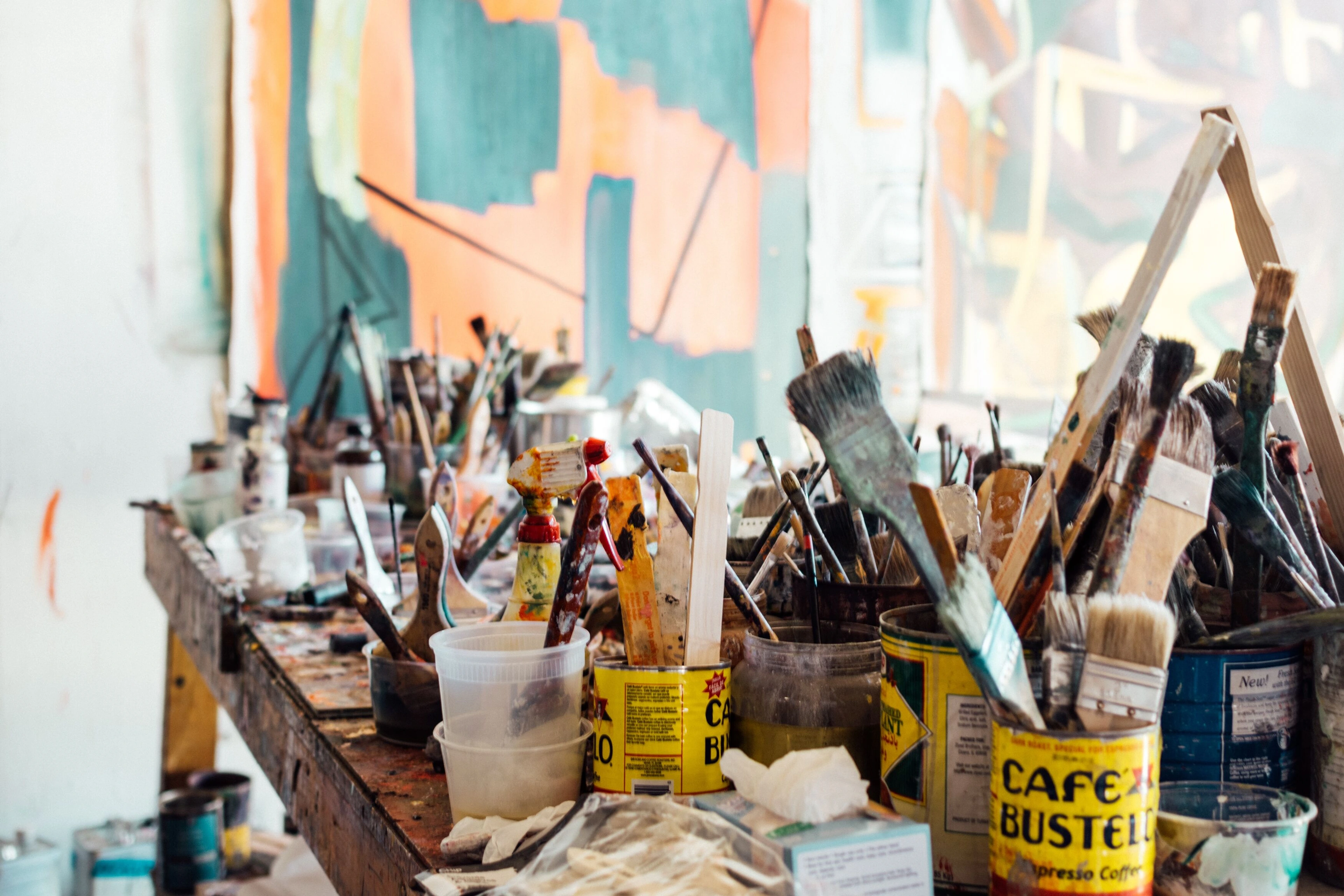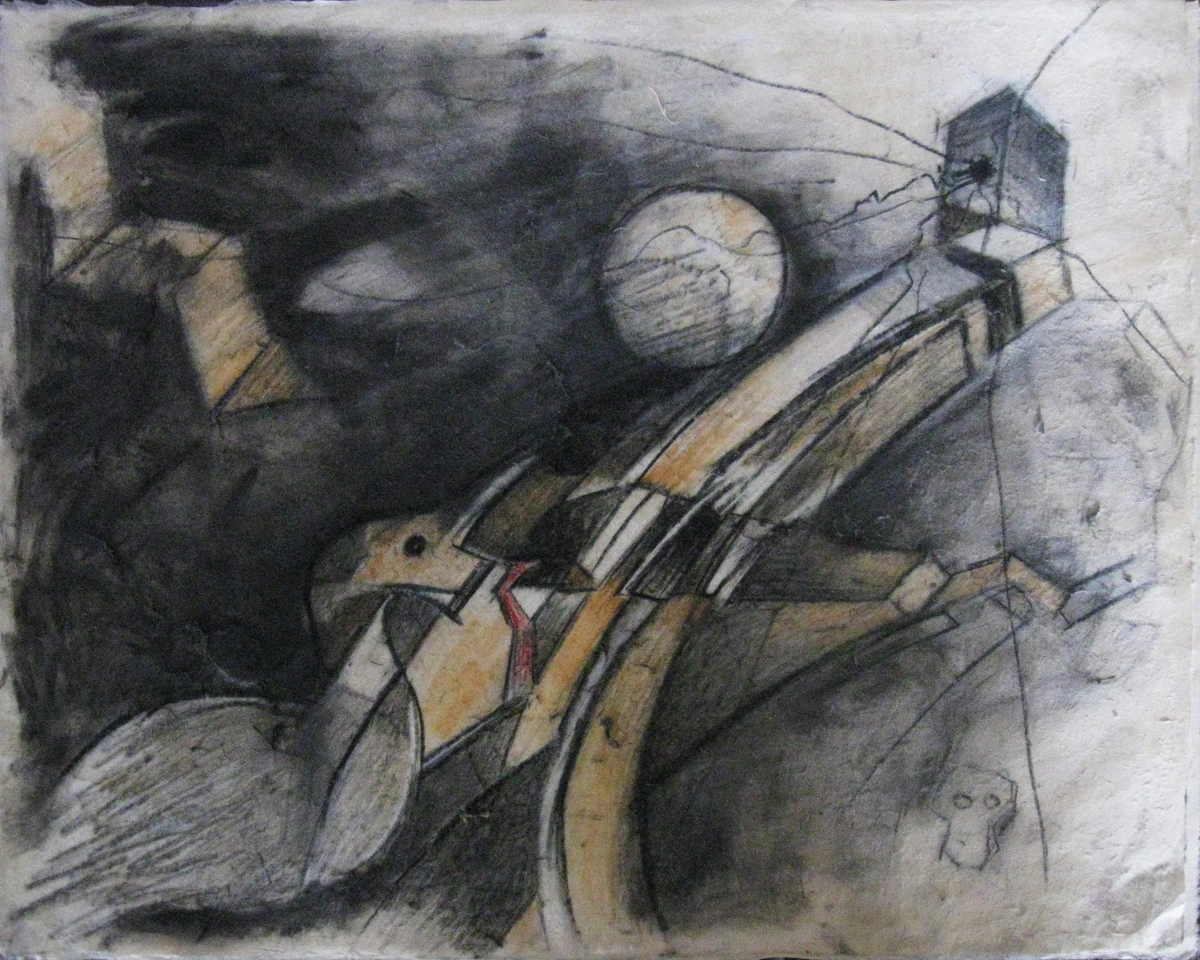
My Secret Weapon: Why Sketching is Indispensable for Abstract Artists
Discover why I, an abstract artist, now champion sketching as a non-negotiable step for idea generation, skill sharpening, and overcoming creative blocks, transforming fleeting thoughts into vibrant art.
My Secret Weapon: Why Sketching is Indispensable for Abstract Artists
Okay, let me be brutally honest with you. For the longest time, sketching felt like a chore, a necessary evil, something you did in art school and then, if you were 'serious,' graduated from. I'd stand there, looking at a blank canvas, feeling the pressure, and often just jump right into paint, hoping for the best. What a naive, slightly arrogant approach that was, right? Looking back, it's clear how much I was missing. It was like trying to write a novel without ever jotting down an idea, a character, or even a plot point. I know, I know, you're probably thinking, "But you're an abstract artist! Isn't it all about spontaneity?" And yes, in many ways it is. But here's the kicker: the most profound spontaneity often comes from a deep well of prepared thought, observation, and plain old, persistent practice. This realization wasn't unique to me; it echoes through the annals of art history. Think of Leonardo da Vinci's meticulous anatomical studies, or the rapid, dynamic sketches of Picasso, capturing the essence of a form before it hit the canvas. From Renaissance masters to the avant-garde, sketching has been the quiet, unassuming foundation, the artist’s most immediate dialogue with their vision. It's time we, as artists, truly embraced its profound power.
More Than Just Doodling: The True Purpose of Sketching
I've come to realize that sketching isn't about creating a finished masterpiece; it's about giving yourself permission to explore, to fail quickly, and to learn without consequence. It’s the closest thing an artist has to thinking out loud, a visual diary of curiosity.
The Birthplace of Ideas: Where Concepts Take Shape
Ever have those fleeting thoughts, those 'aha!' moments that disappear as quickly as they arrive? Sketching is your net. It's a low-stakes way to grab an initial idea, often helping to quiet that intimidating fear of the blank page. For me, these scribbles are often the seeds of something bigger. A flicker of an idea for a new series, a unique compositional arrangement, a feeling I want to convey. I remember one chaotic afternoon, a fleeting image of overlapping geometric shapes, almost like city blocks seen from above, struck me. Instead of letting it vanish, I grabbed a pencil. That quick scribble became the foundation for my 'Urban Rhythms' series, mapping out my creative journey from concept to canvas in abstract art. It’s messy, often illegible to anyone but me, but it's there.
The Artist's Gym: Sharpening Observation and Skill
Even as an abstract artist, the world around me is my inspiration. The way light hits a building, the pattern of shadows on the floor, the inherent energy in a bustling street—these are all things that inform my work. Sketching forces me to really see. It sharpens my hand-eye coordination, improves my visual memory, and helps me understand line in abstract art in a more fundamental way. Think of the delicate tension in a gestural mark, the deliberate power of a geometric line, or the dynamic rhythm created by a broken, continuous stroke – sketching allows me to explore these nuances. It’s like a daily workout for my artistic brain; the stronger it gets, the more fluid and confident my larger pieces become, helping me develop a truly personal visual language.
Problem-Solving on Paper: Navigating Creative Blocks
We all hit walls. It's part of the deal. But instead of staring blankly, feeling the creative well dry up, I turn to my sketchbook. It's a low-pressure environment where I can try out different approaches to composition or form and space without committing to a large canvas. Sometimes, when grappling with an imbalance between two dominant colors, a quick thumbnail sketch might reveal a mediating shape or line that completely shifts my perspective, untangling a complex visual puzzle. Or, when a painting feels static, a series of rapid sketches might show how a diagonal line or an unexpected cluster of shapes can introduce visual hierarchy and guide the viewer's eye. It's where I embrace experimentation in my abstract art.
My Abstract Secret Weapon: Sketching Beyond Reality
This is where it gets really interesting for an abstract artist like me. My sketches aren't about perfectly rendering a landscape or a portrait. They're about exploring movement, energy, tension, and balance with just a few strokes. They're about capturing the essence of an idea, a feeling, or a visual rhythm—like the raw, frenetic energy of a storm or the calm, almost silent stillness of a dawn. It could be a chaotic burst of lines, a serene interplay of geometric forms, or a rapid gesture capturing a momentary impulse. Furthermore, sketching allows me to explore the interplay of positive and negative space, or even hint at texture through varying pressure and mark-making, all without the complexities of color. These quick, intuitive studies often become the bedrock of a larger, more complex abstract painting, giving it an underlying structure and vitality that wouldn't have been there otherwise. It's the freedom of charcoal and paper speaking volumes without color or grand scale.

https://upload.wikimedia.org/wikipedia/commons/7/79/Bird_and_moon.jpg, https://creativecommons.org/licenses/by-sa/4.0
These vital experiments fill my sketchbooks, turning them from pristine objects into vibrant records of my artistic life.
My Sketchbook Confessions: From Empty Pages to Full Canvases
I used to have this pristine sketchbook, you know the type, lovely paper, expensive binding. I was terrified to 'ruin' it. So it sat there, mostly empty, gathering dust. What a waste! My current sketchbooks are a glorious mess. Stains, smudges, notes scrawled in the margins, coffee rings (don't ask). They're a true reflection of my creative process because they show the evolution of ideas, the spontaneous mistakes, the unexpected discoveries, and the sheer volume of persistent exploration that goes into a finished piece. And seeing those initial scribbles evolve into something I might actually make available for sale is incredibly rewarding. They tell the story of my entire artist's timeline, one quick mark at a time.

Battling the Blank Page Monster
That paralyzing fear of starting, of not being good enough, of making a mistake. We've all been there. It's precisely why sketching, with its inherent low stakes, is such a powerful antidote. My trick? Don't try to make it good. Seriously, tell yourself you're going to make the worst sketch ever—a glorious, unredeemable mess. Think of it as a low-stakes rehearsal. The objective isn't beauty; it's movement, it's engagement, it's just doing. Once you trick your brain into letting go of perfection, the actual ideas, the genuine expression, usually find their way out. It’s a wonderful way to overcome the initial terror of the blank page, transforming it from a judging stare to an open invitation.
The Tools (And Why They Don't Matter as Much as You Think)
Forget the fancy gadgets or designer art supplies for a moment. All you truly need is a pencil (any pencil, really) and some paper. That's it. Seriously. The barrier to entry is almost nonexistent, which is precisely its power. I remember once getting caught up in the pursuit of the 'perfect pen,' only to realize later that the most liberating sketches came from a cheap ballpoint. It's not about the expensive materials; it's about the act itself, the connection between your hand, your eye, and your mind. The subtle scratch of charcoal, the smooth glide of a soft graphite pencil—even these tactile differences can spark new avenues of thought and evoke different qualities in your marks, subtly influencing the abstract journey. Don't let the pursuit of 'the perfect pen' stop you from simply making.

Making it a Habit: My Daily Sketching Ritual
Consistency, not intensity, is key. I try to carve out 5 to 10 minutes every day. Sometimes it's a dedicated session; other times it's a quick scribble during a phone call (sorry, whoever I'm talking to!). The point is to keep the creative muscles warm, to keep the dialogue going. It’s a quiet moment, a small act of rebellion against the constant noise of the world, a direct link to the creative spirit that eventually fuels the larger works you might see in my museum in 's-Hertogenbosch.
From Sketchbook to Studio: The Bigger Picture
These seemingly insignificant studies eventually coalesce into something more. They build a vocabulary, a visual language that makes the leap to canvas feel less daunting and more natural. For instance, a particular dynamic sweep of line explored repeatedly in my sketchbook might later become the dominant gesture in a large abstract painting, imbuing it with familiar energy and flow. Every vibrant painting, every bold abstract expression, started as a whisper on paper, a tentative exploration of what could be. It's the backbone, the scaffolding, the quiet conversation before the big statement—each mark a promise of the grand vision to come.

https://freerangestock.com/photos/177284/artists-workspace-filled-with-paint-brushes-and-supplies.html, https://creativecommons.org/public-domain/cc0/
Frequently Asked Questions About Sketching
Do I need special materials to start sketching?
Absolutely not! A simple pencil (even a ballpoint pen) and any paper you have lying around are more than enough. The focus should be on the act of sketching, not the tools.
Is sketching only for realistic art?
Not at all! Sketching is incredibly valuable for abstract artists. It helps explore lines, shapes, forms, composition, and emotional expression without the pressure of representation. It's a fantastic tool for pure experimentation in abstract art, allowing us to delve into color relationships, texture exploration, and the raw emotional resonance of marks, all untethered from objective reality. More than that, it's crucial for developing an abstract artist's unique visual vocabulary and grammar, laying the groundwork for a truly personal style.
How does sketching help develop personal style?
Sketching provides a consistent, low-pressure environment for repeated exploration of your unique mark-making, preferred compositions, and thematic interests. Over time, these consistent explorations naturally refine and solidify your individual artistic voice, leading to a distinct and recognizable personal style in your larger works.
How often should I sketch?
Consistency is more important than duration. Even 5-10 minutes every day can make a huge difference in developing your skills, observation, and creative flow. Think of it as a daily creative warm-up.
What if my sketches are just... messy?
Perfect! That means you're doing it right. Sketches are not meant to be perfect or finished pieces. They are experiments, thought processes, and learning tools. Embrace the 'bad' sketches; they are steps towards better understanding and stronger art.
Conclusion
So, if you're like I used to be, maybe giving sketching the side-eye, I genuinely urge you to reconsider. It’s not just a skill builder; it's a confidant, a playground, and a quiet conversation with your own creative self. It's the humble beginning of every grand idea, and honestly, without it, I'm pretty sure my abstract art wouldn't have the soul, the depth, or the unexpected breakthroughs it does. Pick up a pencil. See what whispers back.




